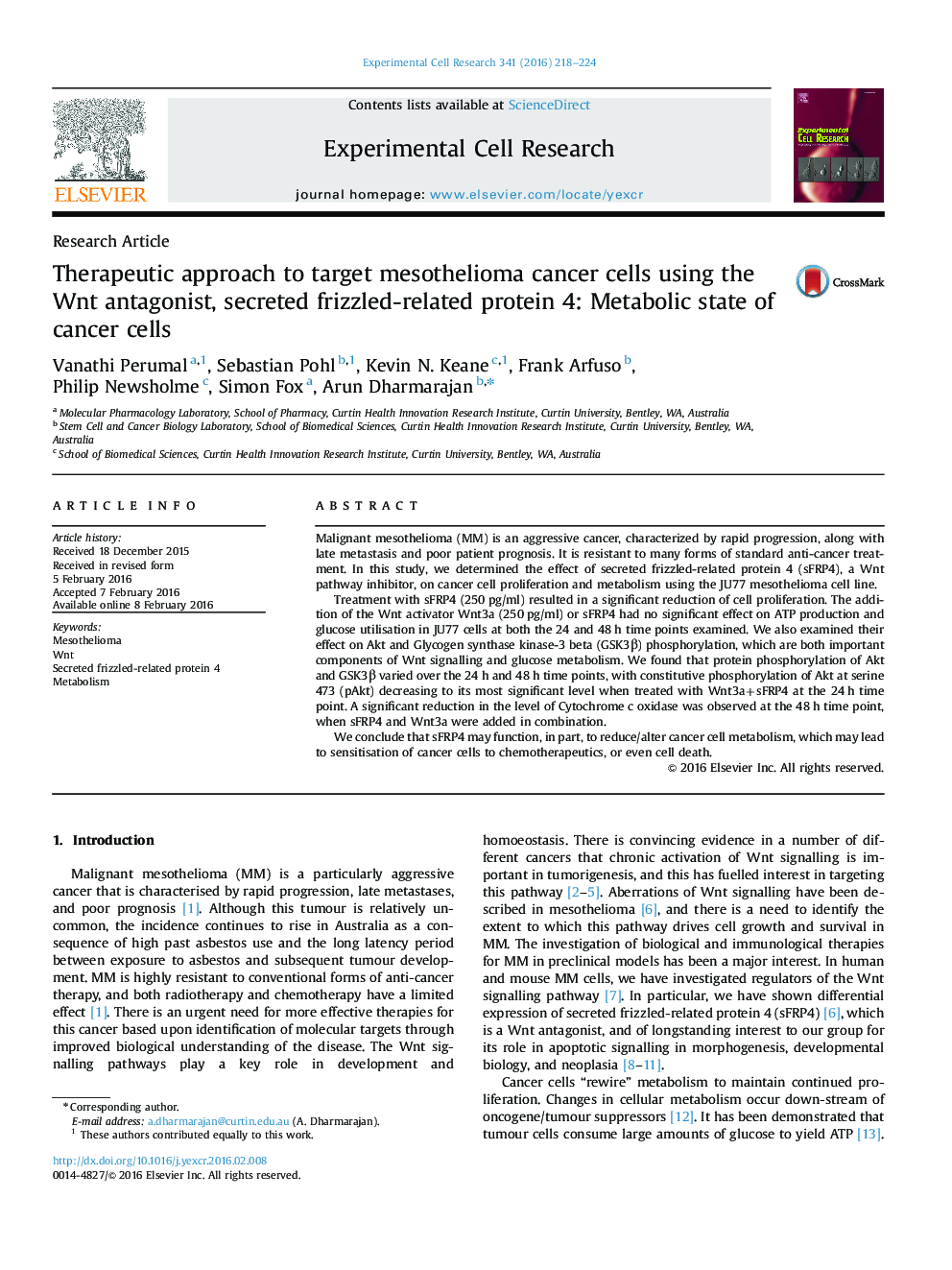| کد مقاله | کد نشریه | سال انتشار | مقاله انگلیسی | نسخه تمام متن |
|---|---|---|---|---|
| 2130003 | 1086516 | 2016 | 7 صفحه PDF | دانلود رایگان |
• Secreted frizzled-related protein 4 reduces mesothelioma cell proliferation.
• Secreted frizzled-related protein 4 induces mesothelioma cell death.
• Secreted frizzled-related protein 4's effects differ depending on the time course.
• Secreted frizzled-related protein 4 interacts with Wnt3a in mesothelioma cells.
• Secreted frizzled-related protein 4 has a biphasic effect on GSK3-β phosphorylation.
Malignant mesothelioma (MM) is an aggressive cancer, characterized by rapid progression, along with late metastasis and poor patient prognosis. It is resistant to many forms of standard anti-cancer treatment. In this study, we determined the effect of secreted frizzled-related protein 4 (sFRP4), a Wnt pathway inhibitor, on cancer cell proliferation and metabolism using the JU77 mesothelioma cell line.Treatment with sFRP4 (250 pg/ml) resulted in a significant reduction of cell proliferation. The addition of the Wnt activator Wnt3a (250 pg/ml) or sFRP4 had no significant effect on ATP production and glucose utilisation in JU77 cells at both the 24 and 48 h time points examined. We also examined their effect on Akt and Glycogen synthase kinase-3 beta (GSK3β) phosphorylation, which are both important components of Wnt signalling and glucose metabolism. We found that protein phosphorylation of Akt and GSK3β varied over the 24 h and 48 h time points, with constitutive phosphorylation of Akt at serine 473 (pAkt) decreasing to its most significant level when treated with Wnt3a+sFRP4 at the 24 h time point. A significant reduction in the level of Cytochrome c oxidase was observed at the 48 h time point, when sFRP4 and Wnt3a were added in combination.We conclude that sFRP4 may function, in part, to reduce/alter cancer cell metabolism, which may lead to sensitisation of cancer cells to chemotherapeutics, or even cell death.
Journal: Experimental Cell Research - Volume 341, Issue 2, 15 February 2016, Pages 218–224
